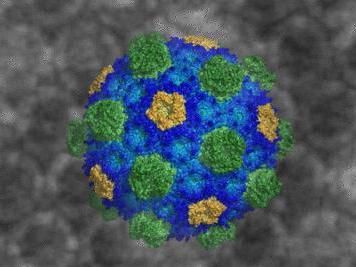Cornell scientists build 'nano-keys' to bind cell receptors and trigger allergic reactions
Cornell University researchers have fabricated a set of "nano-keys" on the same scale as molecules to interact with receptors on cell membranes and trigger larger-scale responses within cells, such as the release of histamines in an allergic response. This was reported by Barbara Baird, Cornell professor of chemistry and chemical biology, speaking at the annual meeting of the American Association for the Advancement of Science.
To study how receptors on cell membranes jump-start cellular responses, Baird and her colleagues chose to work with mast cells because these specialized cells that secrete chemicals and histamines are the gatekeepers for the allergic immune response. And, the system can be manipulated experimentally.
Specifically, Baird works with immunoglobulin E (IgE) antibodies, which mount membrane proteins on mast cells to form receptor complexes that sense the environment and sensitize the cell to allergens. Typically, two or more receptors cluster together when they bind with an antigen and this causes transmembrane activation of enzymes within the cell that eventually lead to the release of histamines.
Such processes begin on the nanoscale - at the molecular level on the cell's surface and lead to a systemwide response. At present, very little is known about the structural changes caused by receptor clustering that allow cells to sense their outer environment and start cellular processes within the cell.
By engineering materials at scales at which they occur, researchers at Cornell's Nanobiotechnology Center learned that shorter ligands, or molecules that bind to receptors, were better at stimulating the processes. Using Y-shaped DNA chains, created by Cornell colleagues, as building materials with arms of specific lengths, the collaborating scientists found that they could stimulate the release of histamines and trigger other basic cellular processes.
Baird said that she and her colleagues also create surfaces of silicon with a layer of polymer or a thin lipid bilayer. The surfaces, which are engineered on the micron scale are arranged in patterns that contain antigens and cause IgE-receptors to cluster when the cells attach to the surface, which in turn activates the cell's inner machinery. The researchers stimulated a response in a cell membrane process that would otherwise be very hard to discern.
Baird also described how her collaborative team can now use microchips with 50-nanometer wells in aluminum film and holes with a diameter one-tenth of the wavelength of light, called zero-mode waveguides, that will allow them to see and analyze the activities of individual molecules involved in cellular processes.
By understanding a membrane's role in cell function, Baird said that researchers have new ways to interfere with responses via the membrane interactions, rather than just targeting proteins to block responses. This could lead, she said, to designing ligands that trigger a desired response or that tie up receptors so they do not cluster, thereby inhibiting an allergic reaction and preventing the release of histamines and other inflammatory mediators.
See the theme worlds for related content
Topic world Antibodies
Antibodies are specialized molecules of our immune system that can specifically recognize and neutralize pathogens or foreign substances. Antibody research in biotech and pharma has recognized this natural defense potential and is working intensively to make it therapeutically useful. From monoclonal antibodies used against cancer or autoimmune diseases to antibody-drug conjugates that specifically transport drugs to disease cells - the possibilities are enormous

Topic world Antibodies
Antibodies are specialized molecules of our immune system that can specifically recognize and neutralize pathogens or foreign substances. Antibody research in biotech and pharma has recognized this natural defense potential and is working intensively to make it therapeutically useful. From monoclonal antibodies used against cancer or autoimmune diseases to antibody-drug conjugates that specifically transport drugs to disease cells - the possibilities are enormous

























































